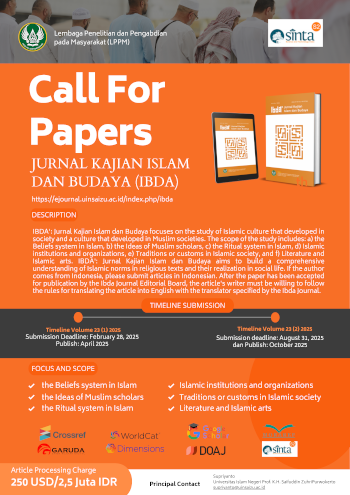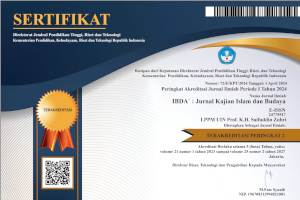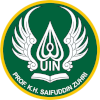AKULTURASI ISLAM SUNDA (Kajian terhadap Tradisi Hajat Sasih)
DOI:
https://doi.org/10.24090/ibda.v11i1.68Kata Kunci:
Islam Lokal, Hari Raya Idul Adha, Hajat Sasih, Kampung Naga, Ziarah.Abstrak
This research is about Idul Adha festival which is combined withHajat Sasih, a ritual that is spread out in Kampung Naga. Phenomenologicalapproach with ethno science paradigm by James P. Spradley isused to record the festival. It has been found that the festival is withoutslaughtering the livestock and the Hajat Sasih ritual is dominated thefestival. Hajat Sasih is a kind of thankfulness to God by visiting the cemeteryof the ancestors; Sembah Dalem Eyang Singaparana besides it isalso a special moment for the people to get the benefit of silaturahmi,ziarah kubur and tumpeng which are blessed by the senior villager. Thepeople are presenting a gift to religious leaders and village leaders.Unduhan
Data unduhan belum tersedia.
Unduhan
Diterbitkan
2013-01-15
Cara Mengutip
Bambang, A. M. (2013). AKULTURASI ISLAM SUNDA (Kajian terhadap Tradisi Hajat Sasih). IBDA` : Jurnal Kajian Islam Dan Budaya, 11(1), 61–75. https://doi.org/10.24090/ibda.v11i1.68
Terbitan
Bagian
Articles
Lisensi
Authors who publish with this journal agree to the following terms:
- Authors retain copyright and grant the journal right of first publication with the work simultaneously licensed under a Creative Commons Attribution-ShareAlike License a that allows others to share the work with an acknowledgement of the work's authorship and initial publication in this journal.
- Authors are able to enter into separate, additional contractual arrangements for the non-exclusive distribution of the journal's published version of the work (e.g., post it to an institutional repository or publish it in a book), with an acknowledgment of its initial publication in this journal.
- Authors are permitted and encouraged to post their work online (e.g., in institutional repositories or on their website) before and during the submission process, as it can lead to productive exchanges, as well as earlier and greater citation of published work (See The Effect of Open Access).
















